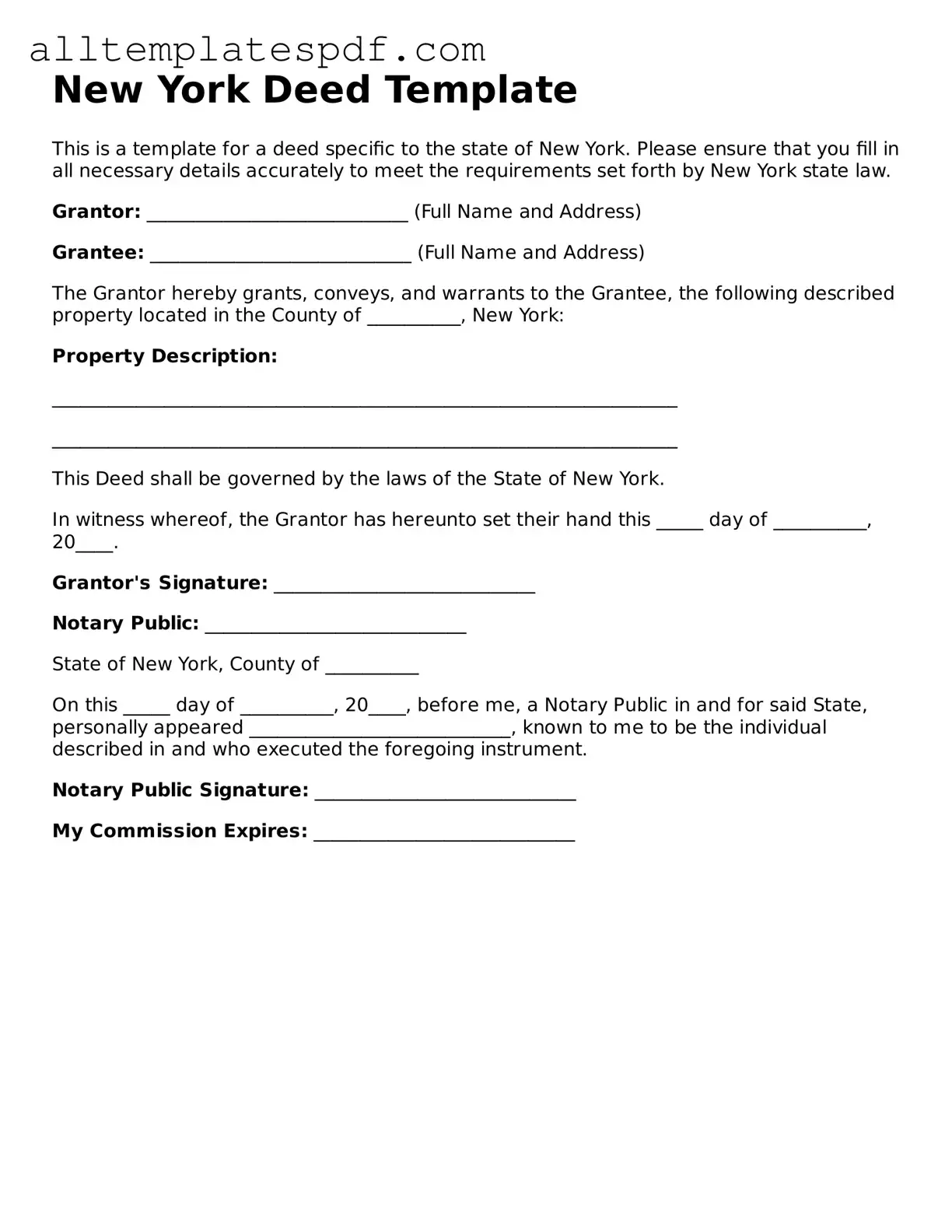Filling out a New York Deed form can be a straightforward process, but many individuals make common mistakes that can lead to complications down the road. One of the most frequent errors occurs when the property description is incomplete or inaccurate. A precise legal description is crucial. Without it, the deed may be considered void or subject to disputes regarding property boundaries.
Another common mistake is failing to include the correct names of the parties involved. Both the grantor (seller) and grantee (buyer) must be accurately identified. Omitting a middle name or using an incorrect variation can create confusion and potentially invalidate the deed.
Many people also overlook the necessity of notarization. A deed must be signed in the presence of a notary public. If the signature is not properly notarized, the deed may not be recognized by the county clerk, which can hinder the transfer of ownership.
Some individuals neglect to check for outstanding liens or encumbrances on the property. If the deed is executed without addressing these issues, the new owner may inherit significant financial burdens. It is essential to conduct a thorough title search before finalizing the deed.
Additionally, people often fail to consider the implications of transferring property into joint ownership. When multiple parties are involved, it is vital to clarify the nature of the ownership. For instance, whether it is joint tenancy or tenancy in common can affect the rights of each owner, especially in the event of death.
Another mistake involves not providing the necessary consideration. In New York, a deed must state the consideration, which is typically the purchase price. Failing to include this information can create ambiguity and lead to legal challenges later.
Some individuals also neglect to file the deed with the appropriate county office. After the deed is completed and notarized, it must be recorded to provide public notice of the property transfer. Skipping this step can result in complications regarding ownership rights.
Moreover, people often misunderstand the tax implications associated with property transfers. New York imposes transfer taxes on real estate transactions. Failing to account for these taxes can lead to unexpected financial liabilities.
Lastly, many individuals do not seek legal advice when filling out a deed form. While it may seem simple, the nuances of property law can be complex. Consulting with a legal professional can help ensure that the deed is filled out correctly and that all legal requirements are met.
